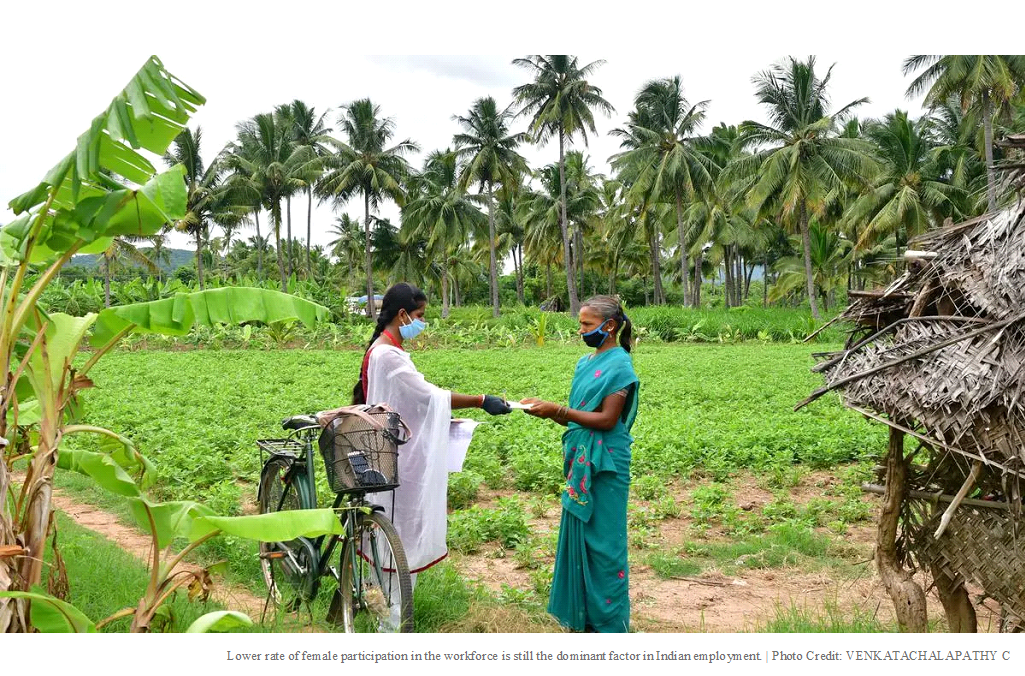Assessing women’s financial inclusion through PMJDY
19 Feb 2024
Opinion: Palash Baruah and DL Wankhar .
While opening of bank accounts has increased over the years, the wide gender gap in availing credit needs a policy response.
The following facts have emerged from the spread of the Pradhan Mantri Jan Dhan Yojana, introduced in August 2014. It has led to greater financial inclusion in the case of males and females, with no rural-urban divide, really speaking. However, female indebtedness lags that of males across age groups, probably because of their lower work participation and capacity to take loans. Credit that is tailored to the needs of women can make a difference.
Official data on the possession of bank accounts, types of accounts and indebtedness were collected as part of the Multiple Indicators’ survey through the 78th round of the National Sample Survey (NSS) (2020). The sample comprised 70.8 per cent of persons from the rural areas and 29.2 per cent from the urban areas, with 51.3 per cent being males and 48.3 per cent females.
Spread of bank accounts
On analysis, it was observed that a little above 87 per cent of the persons (aged 15 years and above) have bank accounts. Surprisingly there is no rural-urban divide. This could be attributed in part to PMJDY as it particularly aims at covering the unbanked section of society, mostly rural households.
However, across age groups, the number of males with bank accounts are higher as compared to females, a difference of 5-8 percentage points. However, across age groups (19 to 50 years) there is a positive relationship between age and number of bank accounts across genders. At the lower age group (15-18 years) and highest age group (more than 50 years), the number of bank accounts across males and females are comparatively lower. Further, there is only a small gender gap across all groups; 89.8 per cent males and 84.5 per cent females have an account with a bank or another type of financial institution such as a credit union, microfinance institution, cooperative, SHG or the post office or having a debit card in own name or mobile money. The Survey shows that more than 90 per cent of persons have accounts with ‘banks’.
The Survey also brought out the fact that 15 per cent of the persons in rural areas with bank accounts are indebted to institutional/non-institutional agencies, while it is a tad lower at 14 per cent in the urban areas. According to this Survey, a household member was considered to be indebted if he/she had taken a minimum cash loan amount of ₹500 and that amount remained outstanding as on the date of survey.
Persons in the age-group of 36-50 years are the most indebted at 23 per cent, followed by persons in the age group of 31-35 years at 19.3 per cent.
There is a direct relationship between the proportion of persons having bank accounts and indebtedness across age groups amongst both genders. But there is a wide gender gap in bank indebtedness — at the aggregate level, males at 20 per cent is twice the number of females (9.1 per cent) that are in indebted to financial institutions. In fact, the gender gap in indebtedness increases with age and more so in the most productive age-group between 26 and 50 years.
Lower rate of female participation in the workforce is still the dominant factor in Indian employment. Growth in females’ employment rate was largely driven by the rise in female unpaid family workers. Hence, their ability to avail credit is hampered, thus translating into lower creditworthiness amongst females.
While females are largely linked to banking or financial institutions in one form or the other, they are comparatively less indebted. Mere access to financial services should not be confused with financial inclusion. Lower indebtedness amongst females could be an indicator of lower participation in entrepreneurial activity.
Another factor that could have impinged the slow adoption of financial services by females is the gender gap in mobile ownership and mobile internet usage. According to the National Family Health Survey–5, only 22.5 per cent females reported using mobile phones for financial transactions. Hence, there is slower adoption of digital financial services by females.
Women-focussed policies aiming at providing easy and favourable access to credit with productive income generating employment opportunities will have a positive impact on credit uptake and overall financial inclusion.
Baruah is Associate Fellow at NCAER. Wankhar is a retired Union government officer. Views are personal.
Published in: The Hindu Business Line, 19 Feb 2024






